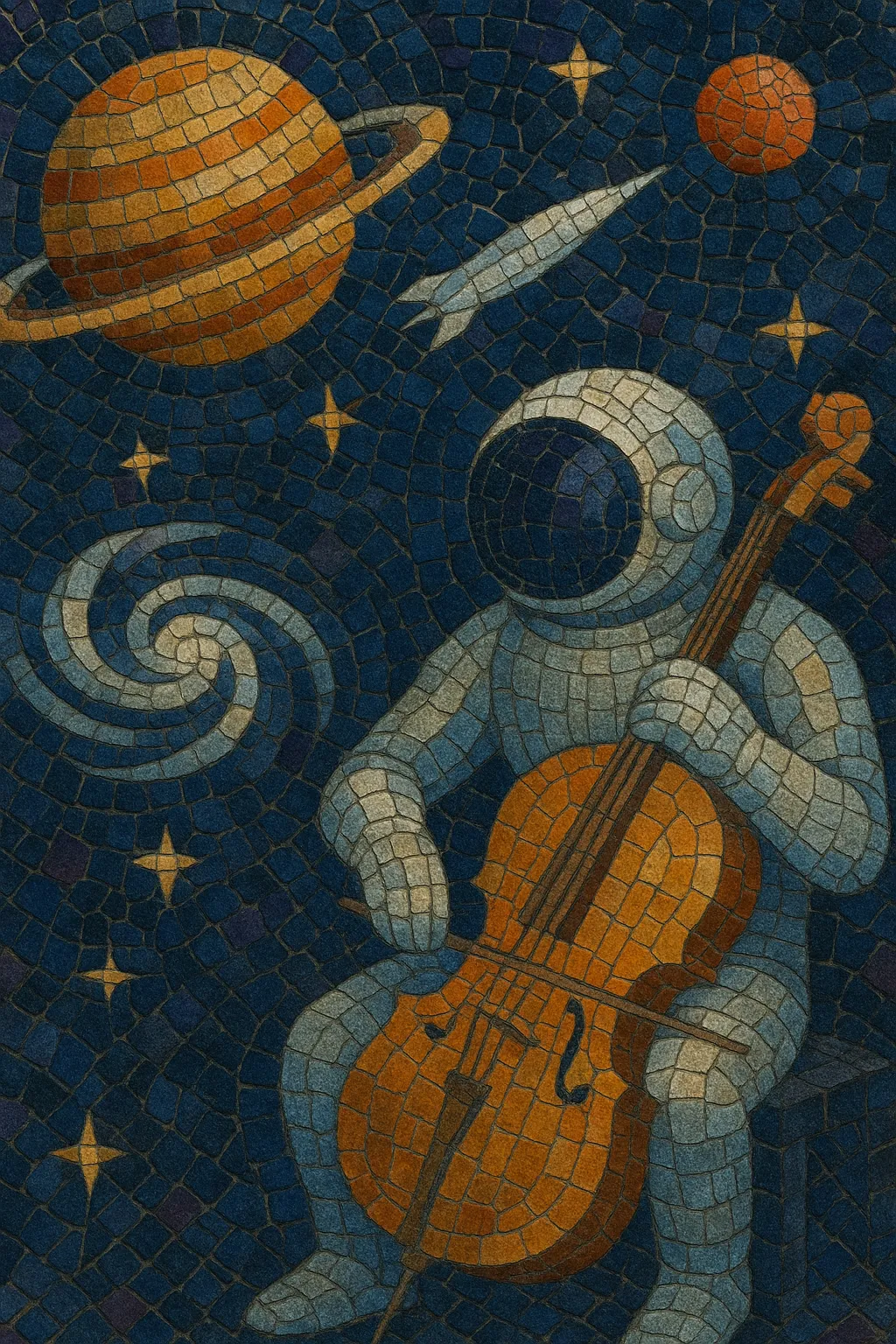Space music is an ambient-leaning form of electronic and acoustic soundscaping designed to evoke vastness, weightlessness, and the mystery of the cosmos. It favors long, slowly evolving textures, deep drones, and luminous harmonies over conventional song structure, rhythm, or melody.
The style grew around sustained synthesizer pads, sequencer patterns, and expansive reverberation, often integrating field recordings or processed acoustic instruments. Whether contemplative or awe‑struck, its intent is to transport the listener into a spacious, imaginal soundfield—akin to drifting through celestial environments and deep time.
The modern notion of space music coalesced in the 1970s as ambient and progressive electronic artists expanded beyond rock forms into long‑form, atmospheric soundscapes. The Berlin School (e.g., Tangerine Dream, Klaus Schulze) contributed sequenced, cosmic journeys; Brian Eno formalized ambient’s function and aesthetics; and the broader krautrock movement encouraged experimentation with electronics and texture.
In the United States, late‑night radio programs such as Music from the Hearts of Space (debuting in the 1970s and nationally syndicated in the 1980s) and Star’s End helped codify “space music” as a listener-facing term. Parallel to the rise of New Age retail and planetarium shows, composers like Michael Stearns, Jonn Serrie, and Steve Roach produced immersive albums that emphasized spaciousness, contemplative pacing, and cinematic expanses.
Through the 1990s, artists integrated richer sound design, deeper drones, and evolving modular workflows. Labels and broadcasters nurtured a global audience, while studio tools (digital reverbs, granular processing, and virtual instruments) broadened the palette. The sound’s influence bled into dark ambient, psybient, and ambient trance, spawning substyles that kept the “cosmic” thread while adopting new timbral and rhythmic vocabularies.
Today, space music thrives across streaming, radio, and live immersion contexts (planetariums, meditative events). Modular synthesis, generative techniques, and immersive formats (e.g., multichannel, ambisonics) sustain the genre’s emphasis on scale and atmosphere, keeping its central promise intact: to evoke the feeling of drifting through boundless space.


